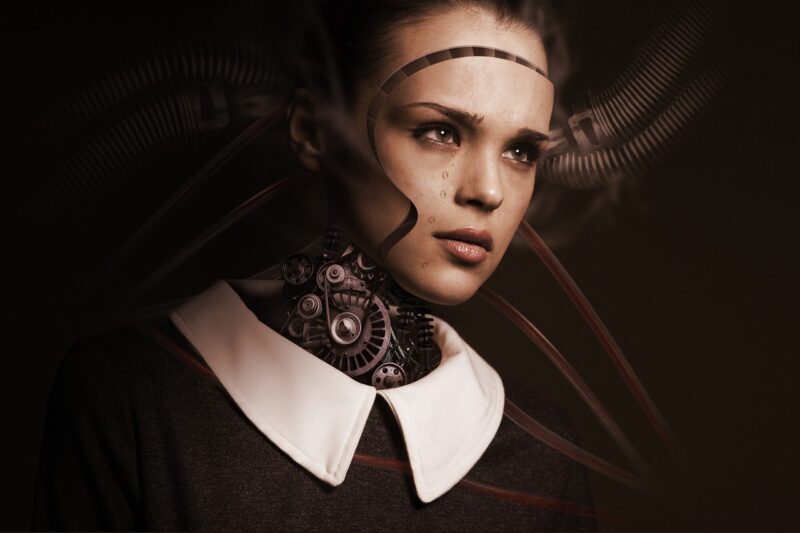Can Artificial Intelligence Ever Truly Be Creative?
November 11, 2024

The question of whether artificial intelligence (AI) can ever be truly creative is a subject of great debate. In various fields, AI has proven capable of producing impressive works—from composing symphonies to crafting original visual art. However, the crux of the matter lies not in the output of these systems, but in understanding the nature of creativity itself and whether machines can genuinely replicate it.
1. Defining Creativity
Creativity can be broadly defined as the ability to generate ideas, solutions, or artistic expressions that are novel and valuable. It encompasses a range of processes including imagination, innovation, and the combination of existing concepts in unique ways. The multifaceted nature of creativity involves cognitive phenomena such as:
- Divergent Thinking: The ability to think in varied ways to generate different solutions to a problem.
- Associative Thinking: The capability to form connections between seemingly unrelated concepts.
- Emotional Insight: The application of personal experience and emotions into creative works.
Understanding this definition is crucial when considering if AI can be counted among creative entities. Does AI possess the ability to think divergently and make emotional connections, or is it simply mimicking patterns it has been exposed to?
2. AI: A Tool for Creativity or a Creative Being?
AI systems largely operate based on existing data sets, employing algorithms that analyze, pattern-match, and produce output based on learned information. Thus, while their results may appear creative, they lack the human experiences, emotions, and intuitions that typically guide a person’s creative process. Some examples of AI applications in creative fields include:
- Generative Art: Algorithms can generate novel artworks by learning from vast datasets of existing art styles and techniques, leading to the creation of visually striking pieces that mimic human aesthetics.
- Music Composition: AI-driven platforms can analyze compositions and genres to generate melodies and harmonies, sometimes resulting in music indistinguishable from human-created pieces.
- Literature Generation: Systems like OpenAI’s GPT can produce narratives, poems, or articles in various styles, often surprising readers with their coherence and creativity.
While AI can generate outputs that appear fruitful, the argument remains: are these creations genuine expressions of creativity, or simply a collage of existing ideas?
3. The Role of Emotion in Creativity
A significant component of human creativity is rooted in emotion; artists often draw from their experiences and feelings during their creative processes. Whether it be joy, sorrow, or longing, the emotional weight of human life adds depth and relatability to creative works. This inherent subjectivity—an emotional engagement with the world—is strikingly absent in AI.
AI lacks consciousness and emotions, making it challenging for these systems to engage in the same creative contexts as a person. Consider the works of Vincent van Gogh or Frida Kahlo: their artistic expressions stem from personal experiences and emotional struggles that inform and inspire their art. Could AI ever understand sadness, love, or existential angst in a manner that influences its creative output?
4. The Case for Collaborative Creativity
While AI may not be capable of traditional creativity as humans define it, there is growing interest in the concept of collaborative creativity—where humans and AI work together in creative pursuits. This partnership results in unique outputs, blending human emotion and intuition with AI’s computational power. Some examples include:
- Interactive Art Installations: Artists can employ AI to create responsive artwork, allowing observers to influence the art based on their interactions with it, resulting in distinct pieces that are constantly evolving.
- Music Collaborations: Musicians utilize AI as a co-creator to explore novel soundscapes and unconventional melodies, generating new compositions that reflect a fusion of human creativity and machine learning.
- Writing Partners: Writers use AI as a brainstorming tool, enhancing their storytelling prowess by generating varied plot ideas or developing dialogue based on given prompts.
Through collaboration, AI becomes a supportive tool for human creativity rather than its replacement. As we embrace this synergy, it raises the potential for innovative outcomes that neither party could achieve alone.
5. Ethical Considerations>
The rise of AI in creative fields also brings ethical questions surrounding ownership and authenticity. Who owns the intellectual property generated by AI? Is it fair to credit an algorithm as the creator of a work that could be mistaken for human expression? Furthermore, using AI-generated content raises concerns about the dilution of artistic integrity and the oversaturation of the market with generated content lacking genuine human insight.
To navigate these issues, society will need to engage in discussions and regulate how AI is integrated into the creative landscape, ensuring that it complements rather than undermines traditional artistic practices.
Conclusion: The Future of Creativity with AI
Ultimately, while AI has made significant strides in generating outputs that resemble creativity, the depth of human experience, emotional connection, and intuition remains a challenge for machines to replicate. AI can serve as an invaluable tool—accelerating creative processes, providing support, and enhancing the human ability to conceptualize. Yet, true creativity—with its intrinsic emotional and personal significance—remains a distinctly human trait. As we move forward, fostering a collaborative environment where AI and human creativity coalesces could redefine creative boundaries, leading to innovative and multifaceted expressions of art and culture.
In this new era, the question may not be whether AI can be creative in the traditional sense, but how we can leverage AI’s strengths to inspire and elevate human creativity to uncharted territories.






